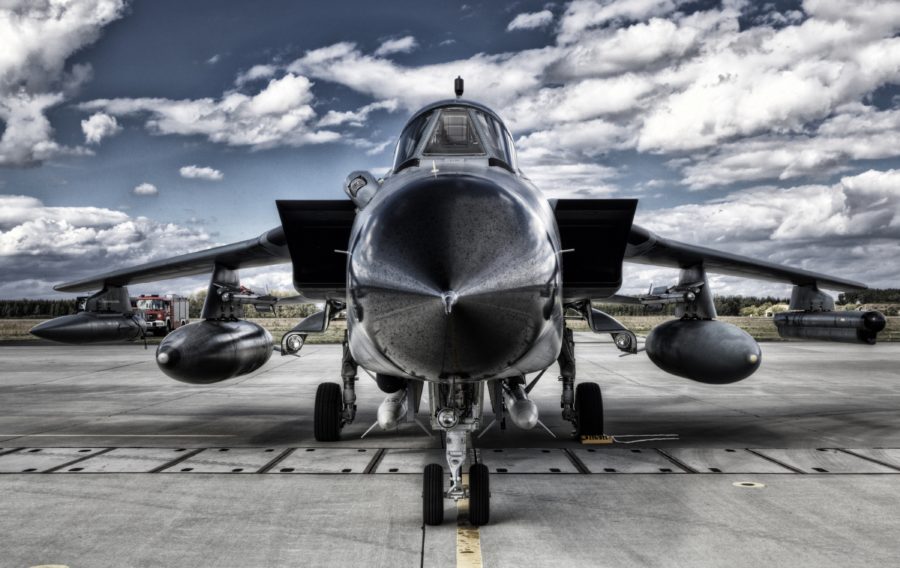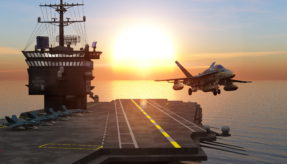
Military assets and equipment are getting more complex, but for some roles they are actually becoming much simpler, while delivery and support is increasingly globalised and will continue to be so. Evan Butler-Jones, Director, Defence Product Line, Aviation & Defence Business Unit at IFS, looks at five changes set to transform the in-service support model for the military over the next decade.
Introducing a new asset into a military force used to be simple. Manufacturers made equipment, the military bought it, maintained it and, when it became obsolete, they invested in a new asset.
Today, many military operators don’t maintain their own equipment. OEMs or third-party contractors are maintaining equipment via servitisation-based agreements and asset delivery. Support has become a complex portfolio involving military organisations, OEMs, contractors and third-party providers all trying to deliver a single, operationally-focused outcome.
Equipment is also growing in complexity and scale. Just look at some of today’s military jet fighters, such as the F-35 joint strike fighter, Eurofighter Typhoon and Saab JAS 39 Gripen. Alongside this, the global maintenance support market will reach £20 billion by 2026 as military aviation fleets grow to over 40,000 aircraft in the next ten years.
In the next decade, we will witness five major changes in the type of in-service support given to military organisations.
- More global delivery, but varied complexity
Procurement of key assets has changed. Defence forces have gone from a model where a country would manufacture its own jet, to having nations and prime contractors collaborate and develop an aircraft (the Eurofighter Typhoon), to a global OEM manufacturing a jet and delivering it worldwide (the F-35).
But as the trend towards amalgamated and advanced equipment continues, a void is being created at the lower end of the market, and suppliers are jumping to fill. The highly capable Textron Scorpion for example – designed for basic surveillance and reconnaissance missions – costs £15m and has an advertised cost per flight hour of just over £2000. An aircraft like this has significant attractiveness against enemies without advanced air defences.
However, the support models for these two lines of equipment are completely different. The logistics support systems on modern military jets must span a global network of players involved in the total lifecycle of the aircraft, from OEMs and suppliers to maintenance activities and customer support. On the other hand, less technical equipment involves a simple ‘acquire, buy spares and maintain’ support model.
In-service support providers should gear up for both approaches, or face losing out on missed opportunities and lucrative contracts.
- Land, Sea and Air Drone proliferation
The question is, do defence forces need to invest in expensive and complex equipment anymore?
Drones and unmanned aerial vehicles are starting to revolutionise the logistics footprint of military forces. Drones come in many flavours—from hand-launched flyers and remote-controlled rovers to complex multirole fighter jets. Likewise, the acquisition and in-service-support models for military drones are likely to vary. On one hand, some drones are valuable and remain in service long enough to require a maintenance and support strategy similar to traditional assets. On the other hand, certain drones are low-priced and require no maintenance, so supporting them becomes a much simpler ‘logistics and spares’ issue.
Efficiency savings can be made by making use of equipment which is cheaper, more versatile and doesn’t involve sending soldiers onto the frontline. In late 2016, the British Royal Navy launched a full-scale exercise made up entirely of unmanned equipment—nine different assets were flying, driving and sailing while interacting with each other.
Sending a defence force forward requires maintenance expertise close to the area of operation. Maintenance personnel need transport, food, shelter and protection, quickly creating a large logistics footprint. Adding low-cost drones to this mix drastically changes the concept of operations, with an equally significant impact on forward supply chains.
- The rising demand to manage through-life support costs
The increasing dependence of modern defence organisations on suppliers to generate military capability requires acquisitions and through-life support contracts to be carefully structured. At the same time, harmonious relationships between buyers and suppliers must be developed and maintained.
The current procurement process – with collaborative focus on risk sharing but not necessarily cost-reduction – isn’t sustainable in the long-term. Those responsible for the command of these public/private support networks need a better way to manage through-life costs to support major asset logistics.
Support systems that provide a holistic view of an asset’s health, availability and supply chain, rather than fragmented information from multiple sources, are needed. In order to achieve this, information needs to be shared across buyer, supplier and maintainer partnerships, which often contain organisations from multiple countries.
Blockchain is one of several technologies that could have a serious impact on this cross-organisational visibility. Although new and relatively untested in the defence environment, the technology has the potential to provide a 100 percent verifiable and traceable history of an asset’s lifecycle in real-time. This is particularly important for assets managed through a multi-organisation support chain with the complex accountability contracts we see in modern acquisition programmes.
- Globalisation changing government relationships
Defence budgets as percentage of GDP in the West have been shrinking in recent years, while new markets and opportunities are being found in maturing defence forces in the Middle and Far East.
To quote a recent PwC report: “Defence ministries are relaxing foreign direct investment constraints and asking defence contractors from outside their borders for commitments to their countries that go well beyond traditional short-term, relatively mild offset agreements. Ministries now want broad-based, explicit, and often extensive skills and knowledge transfer to build up their own industrial and military capabilities and diversify their economies.”
Working closely across geographies requires an improved relationship between the OEM and local contractor or military organisation. OEMs need an understanding of security and governance issues country-by-country as well as political transitions which may affect defence policy. The social payback of defence spending must also be considered, with different public attitudes on military expenditure in every geography.
Success will depend on how well OEMs can adapt to a less transactional role and how prepared contractors will be to adapt and remain competitive.
- IT as a strategic enabler, not a transactional tool
In defence acquisitions, IT support for complex assets is sometimes an afterthought when it should be a priority. Examples across the commercial transport and energy sectors, which also involve complex assets with global supply chains, have proved that strategic implementation of IT is critical to operational success.
But defence spending is a divisive public issue. A recent Sputnik survey found citizens in Germany, France, Italy and the UK are polarised on whether their countries should meet the NATO recommended GDP spend of 2 percent. High-profile defence IT projects receive public scrutiny—the results of an ineffective integration can include huge costs and bad press.
A change of IT support models has the potential to deliver greater efficiencies to equipment throughout entire asset-lifecycles. Around 20 percent of the cost of operating a military jet throughout its lifecycle is in procurement—IT-support can focus on making the remaining 80 percent much more efficient.
In the eyes of in-service support providers, IT needs to be elevated from being a transactional tool to a strategic enabler and help military, contractors and suppliers function more efficiently.
In-service support impact
Those who don’t adapt to unlock the potential of these five developments risk compromising operational effectiveness, mission success and even personnel safety as the market shifts in the next decade.
If you would like to join our community and read more articles like this then please click here.







